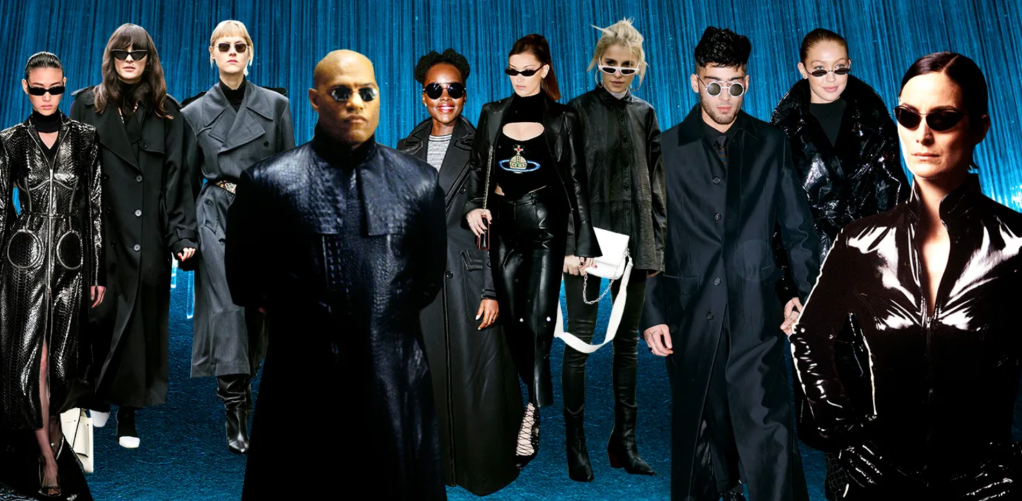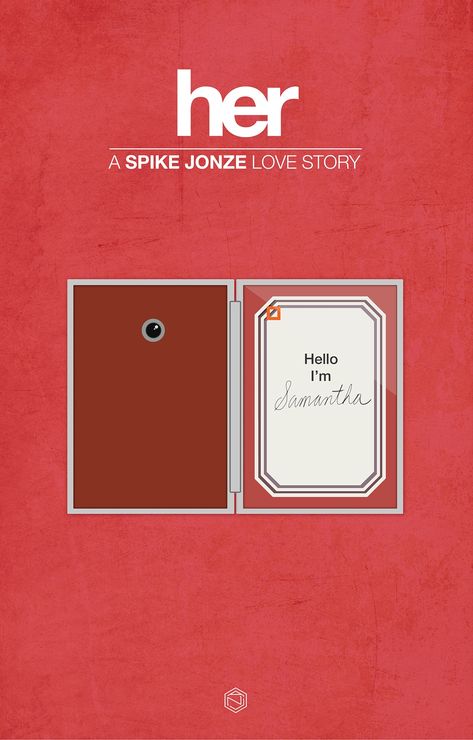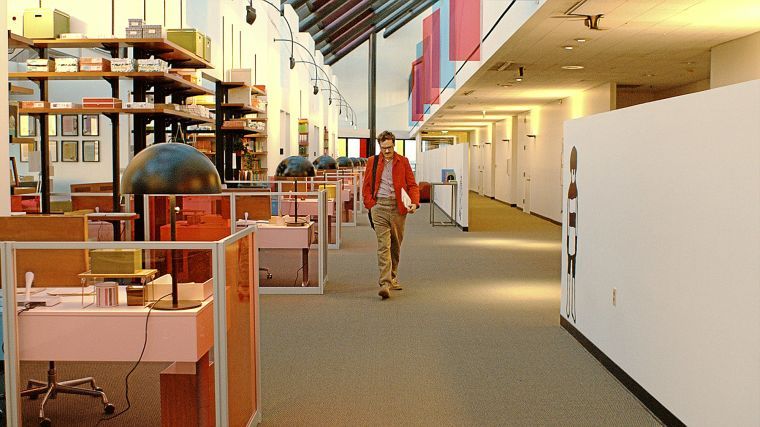Credit Warner Bros. Pictures. 2013, Joaquin Phoenix, ‘Her’
When exploring the deep abyss of speculated future networks it seems unmanageable to think where to begin. Future networks are the ecology of endless information from everything human or non-human. As humans greatly expand our capacity to comprehend, process, communicate and store information everything is changing and progressing rapidly. Within future networks, there are the speculated future networks that explore the new technologies that are approaching with big footsteps (A. Yastrebova, 2019). Within speculated future networks there’s the subject matter and aesthetics of the cyberpunk genre and the contrasted artefacts that are produced through the methodology of design fiction. Signs of future networks are all around us through different content such as aesthetics and media productions. I’ll be exploring the aesthetics of the future and cyberpunk in comparison to design fiction with a focus on the content from the films Blade Runner 2049 (2017), The Matrix (1999) and Her (2013), exploring how they fit within our reality.
Cyberpunk
Cyberpunk is a genre or aesthetic that reflects a dystopian futuristic setting that focuses on where the human meets the machine (A. McFarlane, 2021). It’s also been explained as a form of exploding information technologies and practices. Cyberpunk grew behind the computer screen and came increasingly popular after popular films such as Blade Runner (1982) and The Matrix (1999). Through the visual literature and cinematic success, cyberpunk won viewers through its strong appeal of a fascinating visual vocabulary of the future and cyberspace (C. Alphin, 2020).
The main themes that appear throughout the module focus on the explosion of information through the internet. Throughout the movie Blade Runner 2049 (2017) the content is scary, interesting, ugly and also beautiful in its mess. It features a world built on visualisation, entertainment and advertising, this is a vacant similarity within the world we live in now of constant entertainment and mess that’s on the internet. This relates to Bruce Sterling describing the internet as “strange or even unnatural” (1993) in the way of cyberpunks taking on a world that has been left in a mess of never-ending technology.
The type of content that captivates me when exploring the module is the futuristic fashion that has influenced style today. The skinny glasses, all black and leather influenced by the machine-made virtual construct. Cyberpunk fashion has influenced the clothes of top designers such as Balenciaga, Balmain and Alexander Wang who named his collection ‘Worker Girl Meets The Matrix’. The costume designer of the signature wardrobe Kym Barret says “I was trying to tell a story about what it would be like to live in that world, to feel like it was in a world of bigger possibility, and now we are in that world”.

Design Fiction
Design fiction is a design methodology that investigates design decisions that could be implemented in the near future. It’s argued to be a world-building exercise that promotes making the unreal seem real in the context of a soon environment. In contrast to cyberpunk, the themes throughout the module reflect design fiction to be a clean and credible aesthetic with less ‘stuff’ and visual mess. Black Mirror was an example that stood out, Nosedive is an episode within the show that reflects a dystopian view of cyberculture with a fictional illustration of social media however a dystopian view of it solely being about a social rating system. This is a scary reality of what social media’s outcome might look like in the future.
A film called Her (2013) has an interesting way of exploring this topic through artificial intelligence, based on a system that interprets external data and uses that data for tasks (M. Haenlein, 2019). Although in this case, the AI can learn and adapt near like a human which results in a love story. The visual presentation of the film features the world in a way that is sleek and modern but has elements of old style such as mid-century furniture and fashion inspired by the 1920s and 1940s. Elements noticed are picture frame computers, no cars, hiring people to write letters, holographic video games, and technology that is fashionable and non-distracting. These elements of design fiction come with far more complexities and unforeseen consequences than idyllic technology.


A. Reyes, A Poster A Day, Behance
When thinking about the direction in which the world is evolving Jean Baudrillard speaks of “the mutation of a properly industrial society into what could be called our techno-culture”, as we shift from the renaissance to the 21st century and move into the post-modern period (R.L. Rutsky, 1999). This post-modern period is still unknown but will stem from the information society and technology which is what the aesthetic of cyberpunk and design fiction is crafted by, to predict a post-modern future. Overall, as cyberpunk is seen as an unorganised mess design fiction is a guide to the near future development of a digital culture of new ideas of creativity and how this process should be organised (F. Stalder, 2005).

